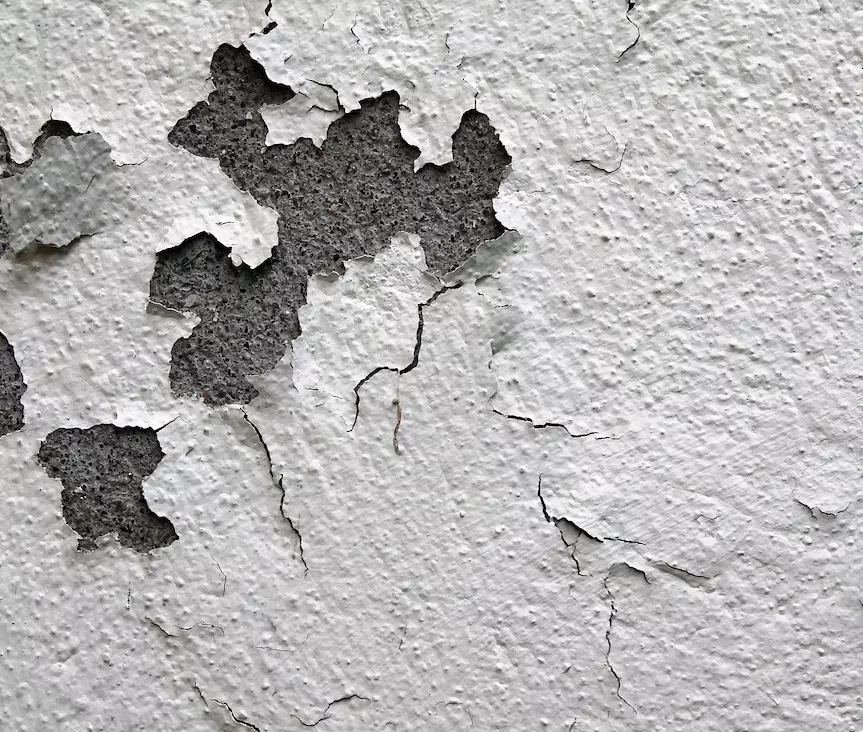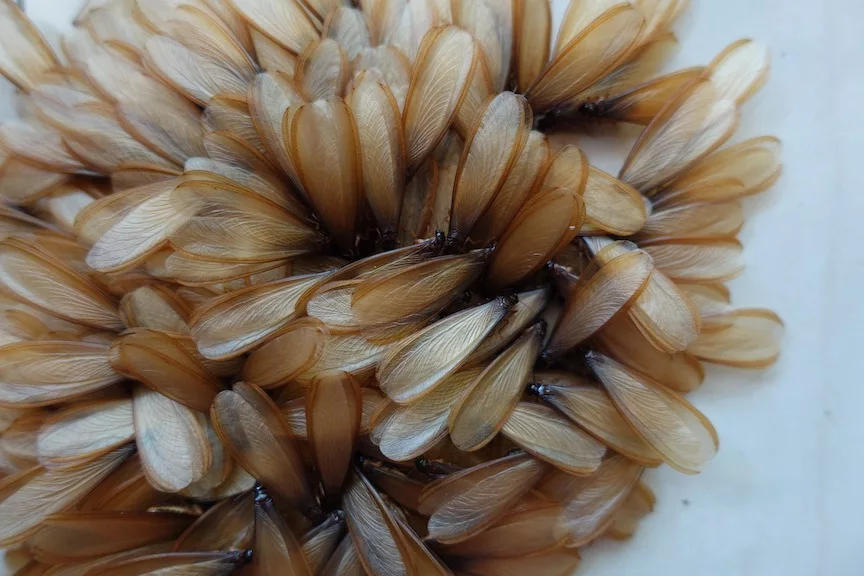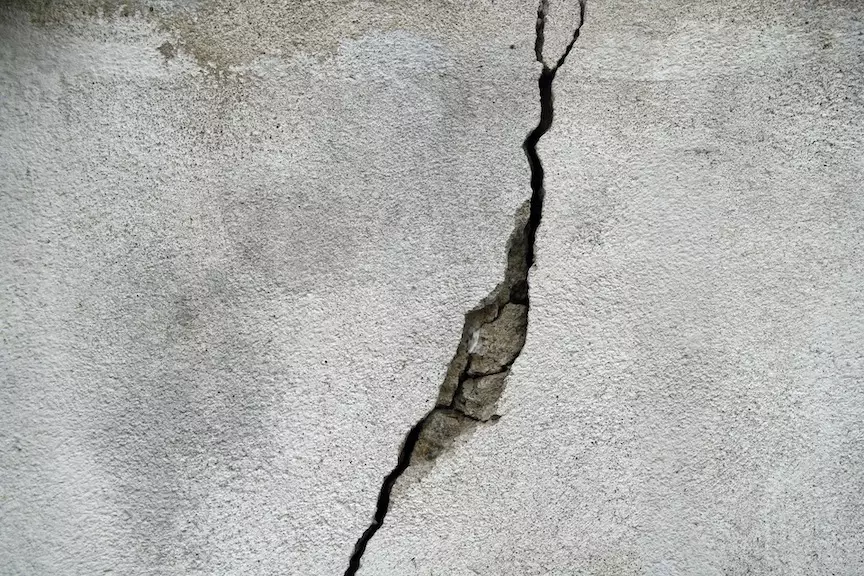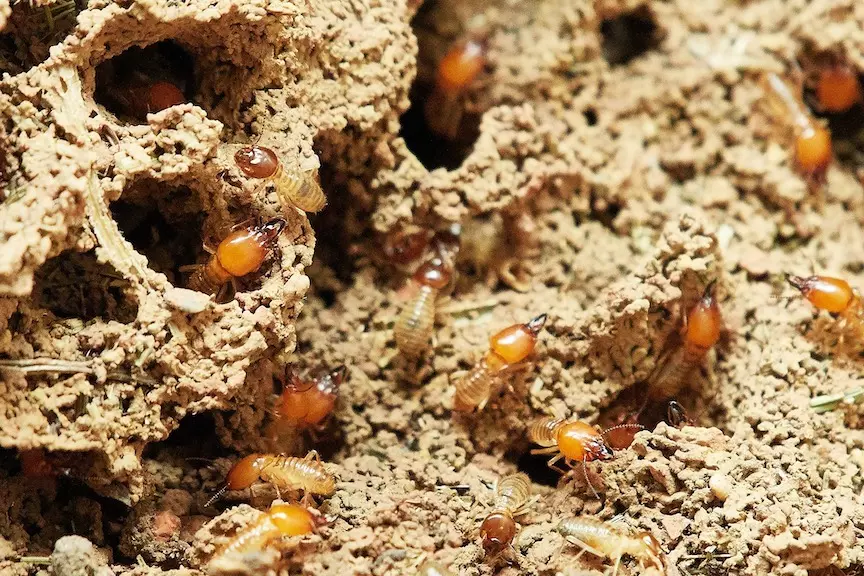Unlike other pests, termite infestations can be hard to detect, as termites tend to hide from view. That's why it is more important than ever to recognize common signs of termites in your home so that you can prevent serious termite damage.
Early signs of termites include:
- Mud tubes
- Spots on drywall
- Bubbling or peeling paint
- Swarmer termites
- Discarded wings
- Damaged wood
- Sagging floors
- Cracks in the wall or ceiling
- Jammed doors or windows
- Hollow-sounding walls
- Droppings
- Live insects
Mud Tubes
Mud tubes, also called shelter tubes, are a common sign of termites. These tubes are constructed by termites to protect them from predators and to keep their bodies moist as they travel from their nests to food sources. Mud tubes are usually about the thickness of a pencil and can be found on walls, floors, or ceilings.
Spots On Drywall
Sometimes the homeowner will see specks of mud in the drywall of their home. The termites are actually eating the drywall itself and sealing out the light with mud.
Image

Bubbling or Peeling Paint
Termite nests tend to have a high moisture level, which can cause the paint on drywall to bubble or peel. This can often be confused with water damage, so make sure to get a professional's opinion when in doubt.
Swarmers
Swarmers are winged termites that have left their nest in search of a new place to build a colony. These swarmers, which are active in the spring, resemble flying ants and are typically gone in a day or so. They are often seen around windows and doors, or near sources of light.
Image

Discarded Wings
Once termite swarmers have found a suitable place to establish a new colony, they drop their wings and reproduce. So if you find piles of wings near windows, doors, or on window sills, it could be a sign that swarmers just moved in.
Damaged Wood
Termites damage wood as they tunnel through it to create their nests. This damage can be seen as small holes in the wood, or as larger chunks of missing wood.
Sagging Floors
Sagging floors can be caused by termites eating away at the support beams beneath the floor, causing structural damage. If you have a sagging floor, it's important to have it inspected by a professional to determine the cause.
Image

Cracks in Walls or Ceilings
Similar to sagging floors, cracks can appear in your walls or ceilings if wooden beams that help to support your house have been eaten away by termites.
Jammed Doors or Windows
Termites also eat away at doors and window frames. If your doors or windows are suddenly harder to open or close, this could be a sign of termite damage.
Hollow-Sounding Walls
If you tap on your walls and it sounds hollow, this could be a sign of termite damage. Termites eat away at the wood from the inside out, so a hollow sound usually means the wood has been significantly damaged.
Termite Droppings
As termites eat wood, they excrete small, dark droppings around your home, called frass. If you notice something that looks like pepper along floorboards, you might have an active termite infestation.
Image

Live Insects
Though not common, seeing live termites—which look like soft-bodied, cream-colored ants and are about the size of a grain of rice—can be a sign of an infestation. This occurs most commonly when homeowners are remodeling their houses and are pulling up flooring. Once exposed, the workers will quickly scatter and try to get back into the shelter tubes and back to the safety of the colony.
Protect Your Home With Professional Termite Extermination Services
If you have noticed any of these warning signs of termite activity, it is vital to contact professional pest exterminators immediately to schedule a professional inspection.
Termite Treatment in St. Louis
Subterranean termites are extremely common in St. Louis and annually cause thousands of dollars worth of damage. That's why Paske offers a hassle-free termite inspection and removal process. Our Termite Home Defense® and Complete Home® termite control service packages are specifically designed to put a stop to existing termite colonies and protect your home from future costly damage.
There are many different types of termites that can be found around the world. The most common type of termite in the United States is the subterranean termite. These termites live in underground colonies and travel to above-ground food sources through mud tubes. Other common types of termites include drywood termites, which live in wood without any contact with the ground, and dampwood termites, which live in wood that is high in moisture content.
Termites and ants are two very different types of pests. While they may look similar, they actually have a few key differences. Here's a closer look at termites vs ants:
- Termites have a broad waist and straight antennae, while ants have a narrow waist and bent antennae.
- Termites are attracted to wood, while ants are attracted to sugar. This means that if you have a sweet tooth, you're more likely to attract ants into your home than termites.
- Termites cause damage to homes by eating the wood from the inside out. Ants, on the other hand, only cause damage if they nest in your home and their numbers become too large.
- Termites can be difficult to get rid of once they've infested your home. Ants, however, can usually be controlled with some basic pest control measures.
If you're not sure whether you have termites or ants in your home, it's best to contact a professional pest control company for assistance. They will be able to identify the pests and recommend the best course of action for getting rid of them.
There are several things that can attract termites to a house. These include:
- Wood that is in contact with the ground.
- Moisture in the soil around the foundation of the house.
- Cracks or other openings in the foundation or exterior walls of the house.
- Firewood, lumber, or other wood products that are stored near the house.
- Cardboard boxes, paper, or other cellulose-based materials that are left outdoors or near the house.
If you have any of these conditions on your property, it is important to take measures to correct them. This will help to prevent termites from infesting your house.
One of the most common places that termites are found is in drywall. Drywall is a material that is made up of gypsum and paper. It is used to make walls and ceilings for homes and businesses. Termites are attracted to drywall because it is a food source for them. They will eat the paper in the drywall and then use the gypsum to build their nests.

